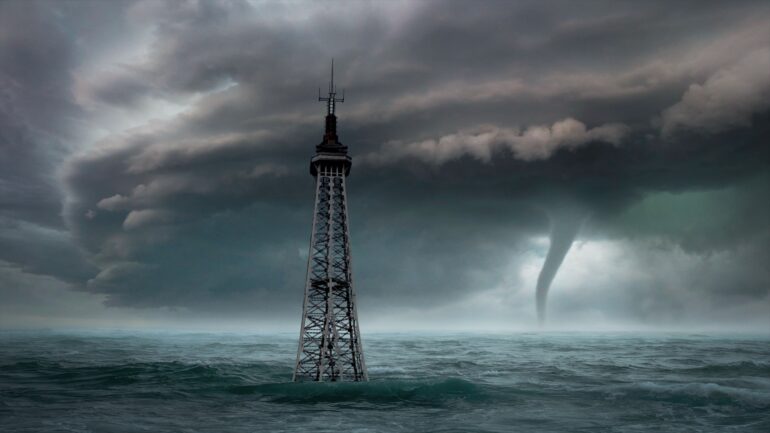TL;DR:
- FAU researchers employ deep learning to decipher the causes of extreme events like floods and tornadoes.
- Turbulent flows, known for their complexity, are explored through a 3D CNN and GradCAM technique.
- This innovative approach can identify extreme event sources in a data-driven manner.
- Potential applications extend beyond fluid dynamics to other scientific domains.
- Control and regulation of turbulent flows can have significant real-world implications.
- The study paves the way for future advancements in engineering and scientific discoveries.
Main AI News:
In the realm of science and engineering, decoding the origins of extreme events, such as floods, intense downpours, or tornadoes, has traditionally been a Herculean task. It has demanded the collective efforts of dedicated scientists spanning decades to unveil the elusive physical explanations behind these occurrences. Extreme events, by their very nature, deviate significantly from expected patterns, wielding the power to reshape outcomes across various scientific disciplines and real-world scenarios. Consider, for instance, rogue waves menacing ships and offshore structures or the increasingly frequent “1,000-year rains” unleashing life-threatening deluges, like the recent 20-inch downpour within a mere seven-hour window in Fort Lauderdale.
At the heart of comprehending such extreme events lies the intricate realm of fluid dynamics, where turbulent flows reign supreme, exhibiting an array of captivating behaviors across time and space. Turbulent flows are characterized by their irregularity, marked by eddies, swirls, and flow instabilities. However, deciphering the randomness and unpredictability of turbulent streams has been a formidable challenge, as traditional equations struggle to impose order upon them.
Enter the researchers from Florida Atlantic University’s College of Engineering and Computer Science, who have harnessed the power of computer vision and deep learning to shed light on extreme events within wall-bounded turbulent flows. These flows are ubiquitous in numerous physics and engineering domains, influencing aspects like wind and hydrokinetic energy. The study’s focal point is the recognition and regulation of organized structures within these turbulent flows, tackling their inherently nonlinear nature head-on.
Published in the esteemed journal Physical Review Fluids, the results of this research underscore the invaluable potential of the technique employed by the researchers in identifying the sources of extreme events in a wholly data-driven manner. The framework they’ve meticulously crafted possesses a versatility that can extend its application to other scientific domains where the spatial dynamics governing critical phenomena remain elusive.
At the core of their approach lies a neural network architecture known as Convolutional Neural Network (CNN), specially designed to unearth spatial relationships. The researchers trained this network to estimate the relative intensity of ejection structures within turbulent flow simulations, all without any a-priori knowledge of the flow’s underlying dynamics.
Dr. Siddhartha Verma, senior author and assistant professor in FAU’s Department of Ocean and Mechanical Engineering, notes, “Understanding and controlling wall-bounded turbulence has long been a pursuit in engineering and scientific discovery. Yet, from a fundamental perspective, much remains in the shadows. Our findings suggest that, with the specific enhancements we’ve introduced, 3D CNNs, combined with the modified multi-layer GradCAM technique, hold immense promise for analyzing nonlinear correlations and uncovering pivotal spatial features within turbulent flow data.”
The overarching framework employed by the researchers hinges on a fusion of 3D CNNs and the newly adapted multi-layer GradCAM (gradient-weighted class activation mapping) technique. This blend offers a comprehensible interpretation of CNN’s learned associations concerning ejection events in wall-bounded turbulent flows.
While the identification of such phenomena is a noble pursuit in itself, the potential for controlling and regulating these coherent structures opens up a plethora of scientific and practical applications. This includes reducing drag on ships or enhancing efficiency in utility infrastructure. Eric Jagodinski, Ph.D., a doctoral alumnus of FAU’s College of Engineering and Computer Science and principal AI engineer at Northrop Grumman, emphasizes the importance of accurately identifying these structures due to the intricate nonlinear evolution they exhibit.
The FAU researchers have gone a step further by fine-tuning the CNN architecture and GradCAM technique to align them seamlessly with the task of analyzing turbulent flow structures. Through this modified CNN-GradCAM framework, they have scrutinized intermittent ejection events, well aware of their role in shaping turbulent kinetic energy within boundary layers.
Dean Stella Batalama, Ph.D., of FAU College of Engineering and Computer Science, lauds this pivotal study, noting, “This research brings forth a novel understanding of wall-bounded turbulent flows through the lens of deep learning. The techniques crafted by our researchers enable the discovery of non-linear relationships within the vast and intricate systems commonly encountered in fluid dynamics simulations.”
Conclusion:
This groundbreaking research by Florida Atlantic University represents a significant leap forward in understanding and controlling extreme events within turbulent flows. The application of deep learning techniques not only benefits the field of fluid dynamics but also holds promise for various scientific domains. As businesses and industries rely on efficient fluid dynamics for numerous applications, these insights could potentially lead to more streamlined processes, reduced costs, and enhanced safety measures. Companies should closely monitor developments in this field to harness the competitive advantages offered by these emerging technologies.

